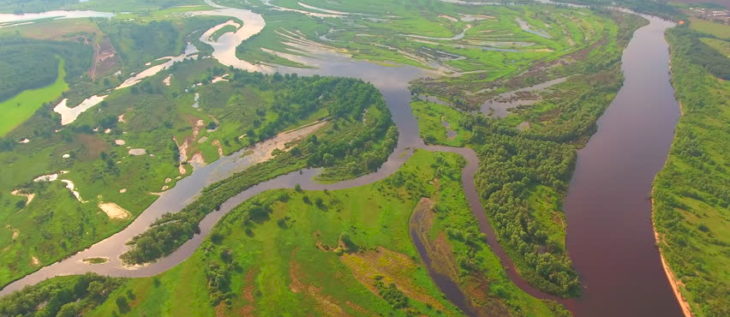LinguiSTICKS: How Trees Helped Solve a Great Historical Mystery

Sometimes the greatest historical mysteries are answered in the most unexpected ways.
Now let’s dial it back a second; we don’t want to get carried away. Those crazy-haired guys you see on TV? They’re still wrong – aliens did not build the pyramids. Occasionally though, the most left-field, so-lateral-it’s-horizontal thinking can cut through decades of entrenched debate and provide a fresh explanation. The brutality and senselessness of the Salem witch trials? Probably madness caused by ergot in the flour. The “Sailing Stones” of Death Valley gliding gracefully along? Thin sheets of ice caused by flash freezing. The mystery of the Mary Celeste? Well that one’s probably ergot too – seems like the best thing since sliced bread is probably bread that doesn’t drive you mental.
The point is that in order to answer a tricky puzzle, you sometimes need to think outside the box, and this is one of the trickiest puzzles in the history of history: where did the Slavs (the ethnic group that makes up the people of much of Eastern Europe) come from?
How did this massive and diverse ethnic group emerge, and how did they, in a few centuries, go from being a barely mentioned footnote in 6th century chronicles to one of the most significant ethnic groups in early medieval Europe?
At this point, it’s probably worth pumping the brakes for a second and going back to the start. What we would recognize today as Proto-Slavs first pop up in ancient Greek and Roman sources from the 1st century AD, but are then only sporadically mentioned. In these ancient sources, the Proto-Slavs are referred to as Wends or Veneti. It seems that in early times the Proto-Slavs were a hunter-gatherer people, following migratory herds of prey animals and practicing limited forms of agriculture. With the Roman Empire shrinking in on itself as the first millennium AD wore on, these Proto-Slavs moved into the areas previously occupied by the Romans, often with hordes of Ostrogoths, Visigoths and Huns at their backs, helpfully keeping their momentum up by burning down their villages and murdering them like some particularly over-zealous personal trainer.
Where were they coming from?
To historians and archeologists working at the turn of the last century and into the 20th, it was clear that these people were arriving from somewhere – where exactly wasn’t obvious. Traditional scholarly belief was that the Slavic people were from the Near-East and had been driven westwards by Scythians and other Iranian-speaking peoples, but that view was beginning to be challenged. You see, questions of ethnicity were incredibly important in the late 19th century. Europe was a very different place to today, and a lot of intellectual energy was expended in trying to either topple or prop up here-today-gone-tomorrow monarchies and fleeting, blink-and-you’ll-miss-it states amongst the rich tapestry of ethnicities, languages and cultures. It was into this febrile atmosphere that Józef Rostafiński, a Polish botanist who had become interested in language and folklore, published his 1908 work, On the Homeland and the Economic Life of the Slavs in Prehistory.
Rostafinski drew some radical conclusions about the Slavic homeland based on language rather than archaeological finds. He noted that in all of the modern Slavic languages (Polish, Czech, Serbian etc.), there were words for trees that had been borrowed from Germanic languages, suggesting that the language must have developed in an area where there was no larch, beech or yew. These species are now common in Europe, with extensive forests of larch and beech growing more or less everywhere, whilst yew is more isolated but still widespread. So where had they come from? Well, remember that Rostafinski was both a botanist and a Pole, so knew all about the one place in Europe were virtually no trees grow at all: the boggy, waterlogged marshes of the Pripet river valley, the now indisputable Slavic homeland.
A once in a lifetime, genius realisation – it’s the same reason that we have English words for badger and hedgehog, but use an aboriginal word for kangaroo.
Looking through the lens of language
When you start looking at it through the lens of language, it becomes even more starkly obvious. There are old Slavic words for rivers, lakes and streams, but none for shoreline and beaches (the Pripet valley is hundreds of miles inland) – even a lack of words for agricultural products that would have been ill-suited to marshes; words for ploughs and dairy products are borrowed wholesale from neighboring languages to the East and West.
Do you know the most incredible thing about this story? That trees have been so consistently important to people for so long. For one reason or another, people have been talking about trees for eons – it’s not just us at Thorogood blathering on about them! Trees, as both a source of timber and inspirational beauty, have been central to all human cultures for as long as we have been here as a species… and nothing is going to change that.
Blog | 7 years AGO